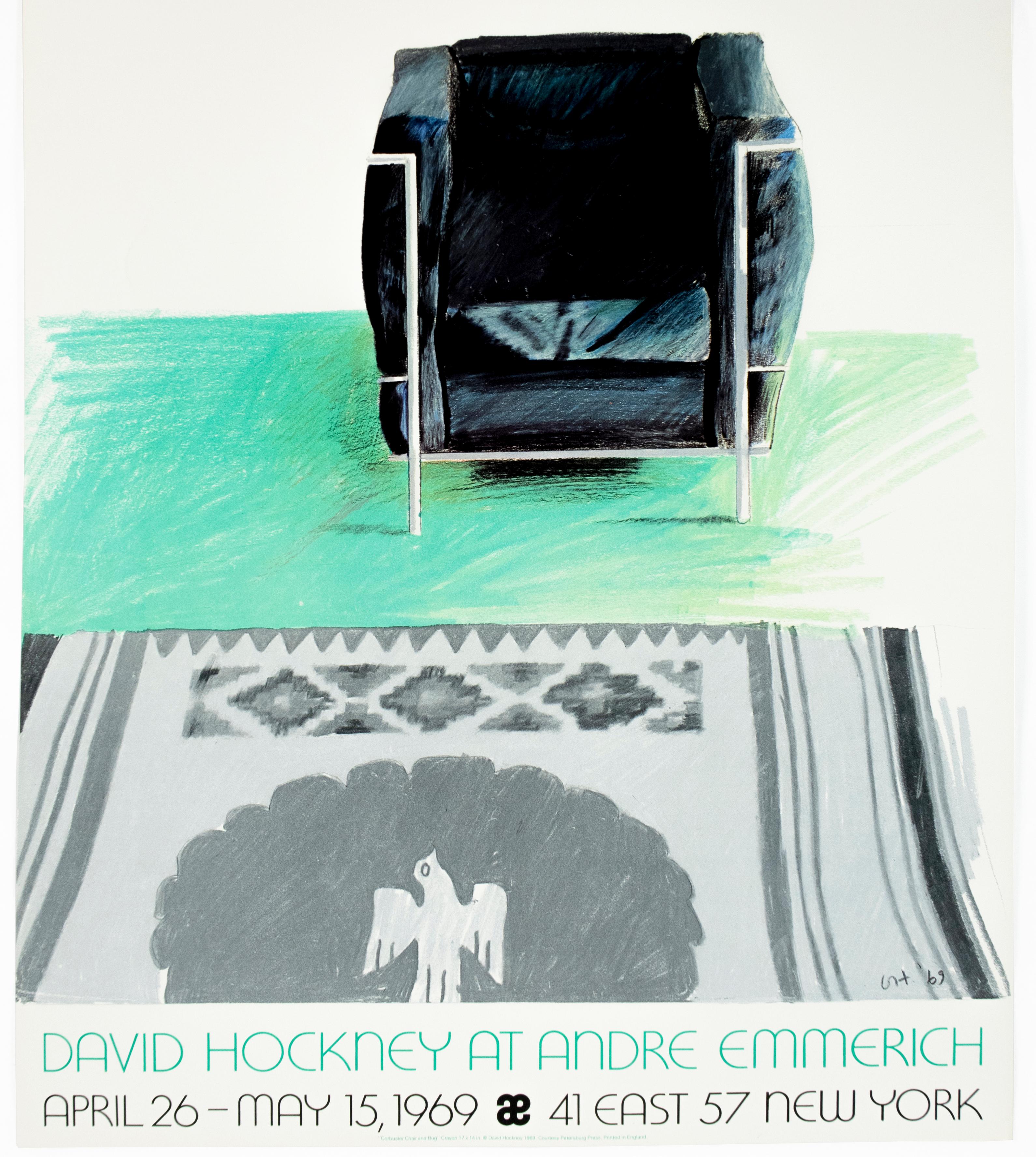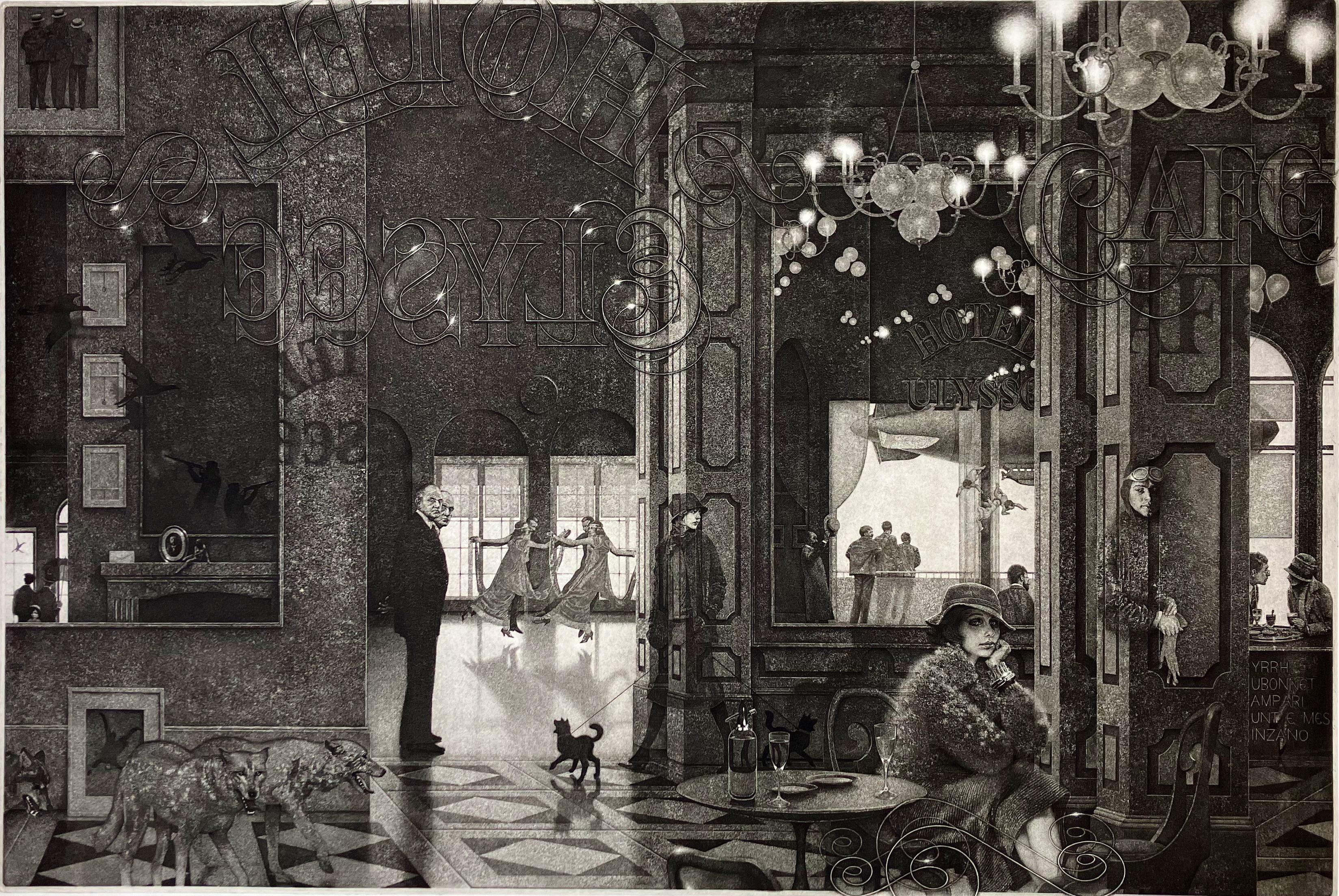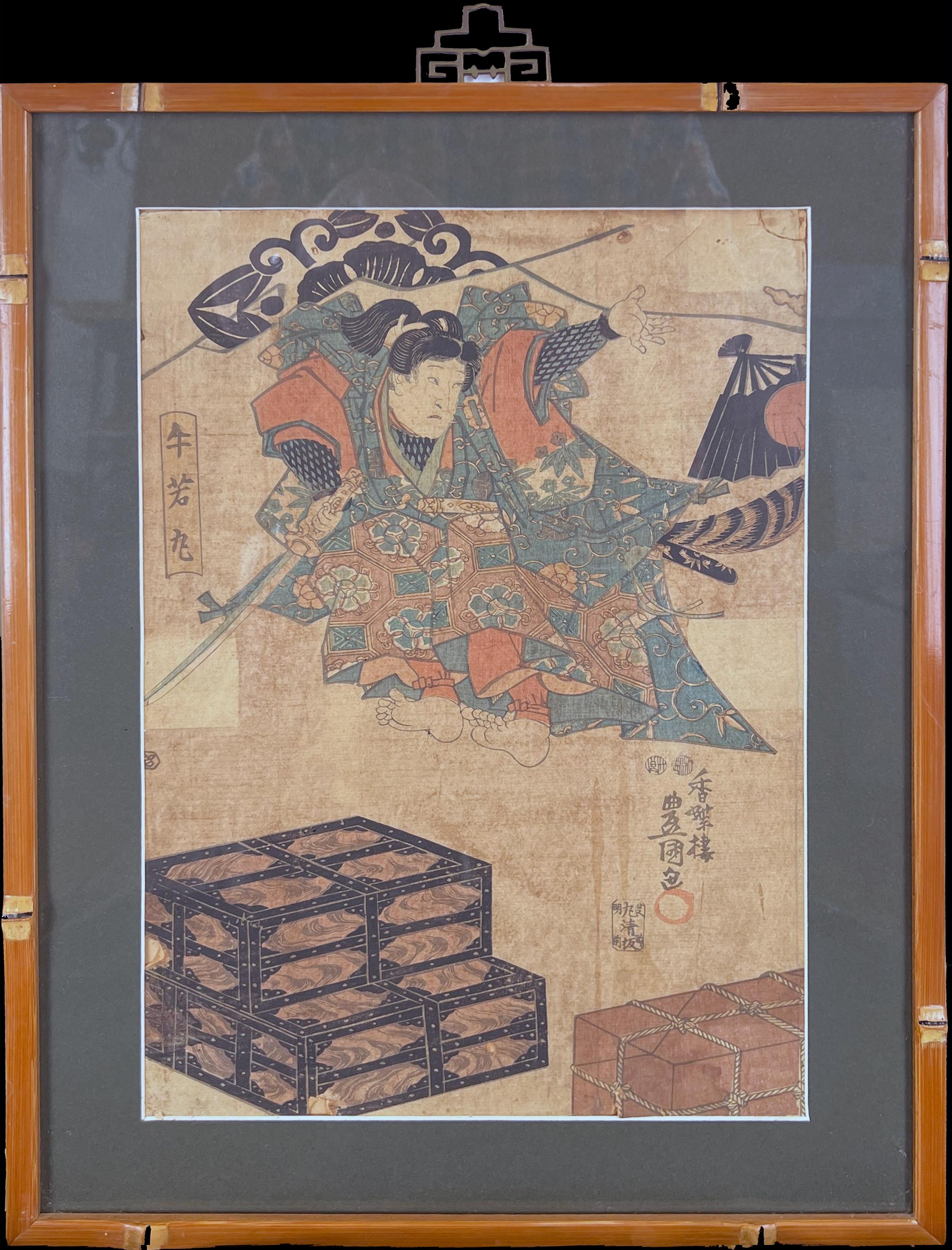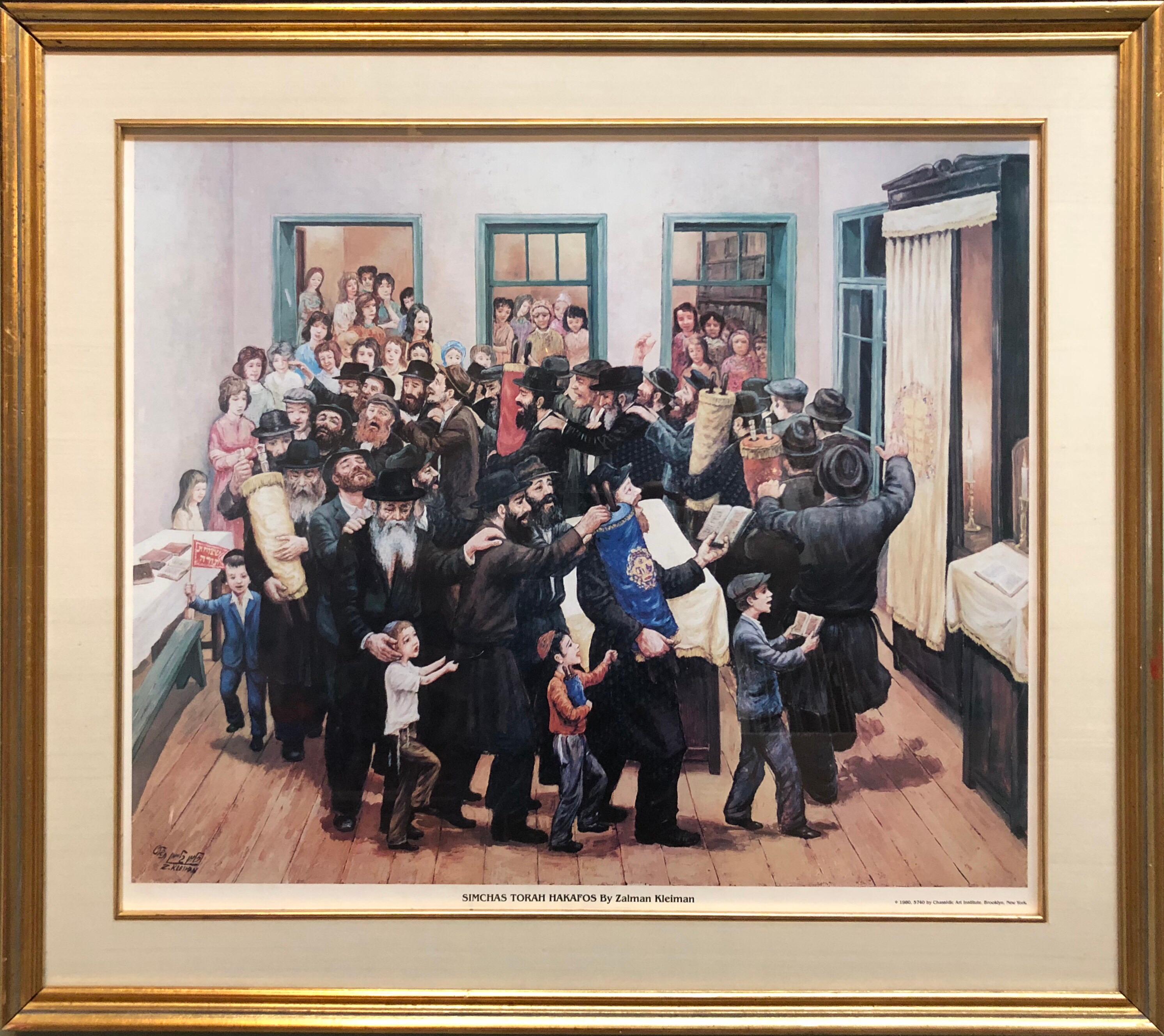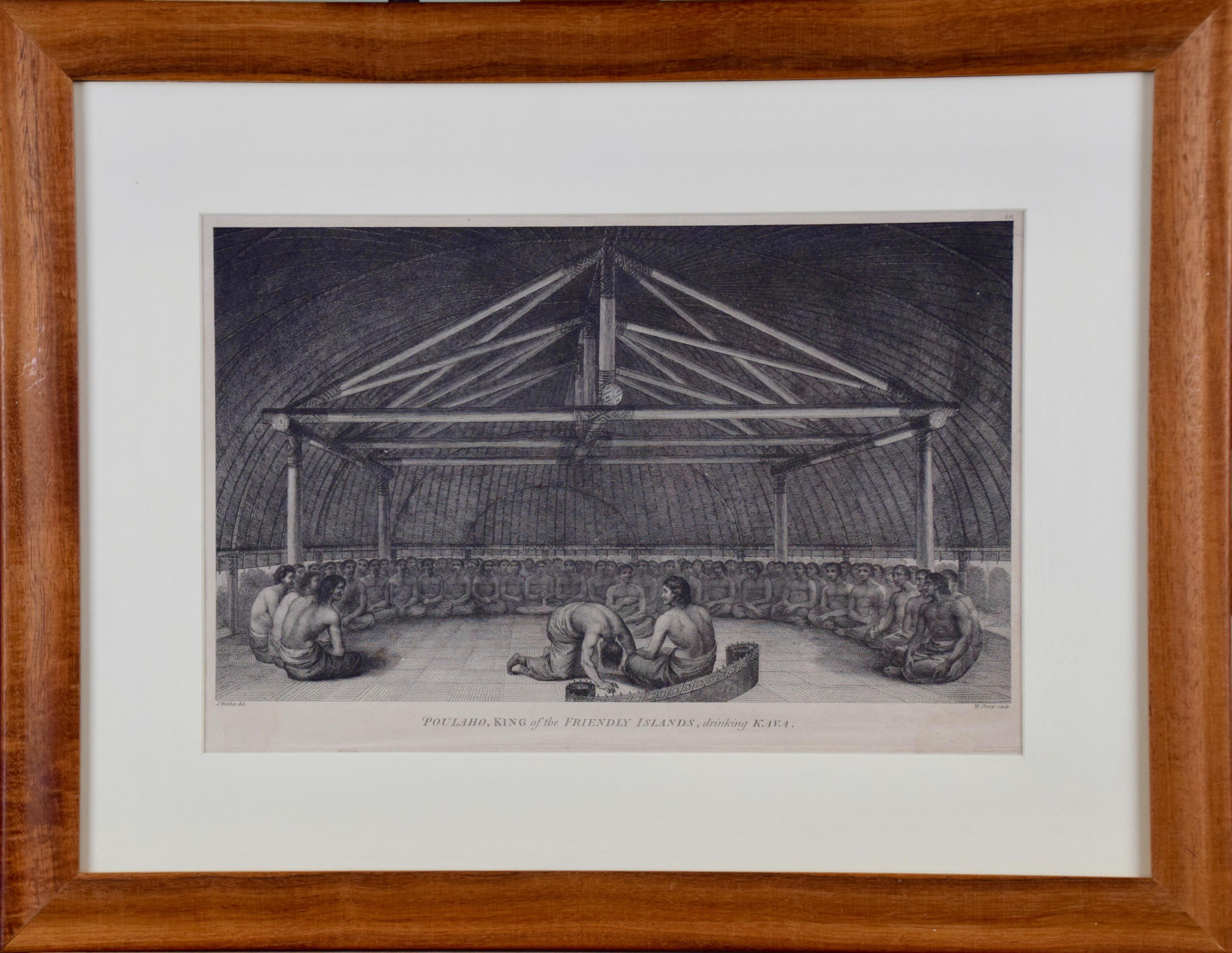Items Similar to "Folding Linen III" - Limited Edition Lithograph, 20/75
Want more images or videos?
Request additional images or videos from the seller
1 of 9
Robert Baxter"Folding Linen III" - Limited Edition Lithograph, 20/75 1985
1985
About the Item
Beautiful figurative limited edition lithograph by Robert Baxter (American, b. 1933). Signed and numbered "R. Baxter 20/75" lower left. Displayed with white mat and black metal frame. Image size: 20"H x 32"W.
Draughtsman, painter and printmaker, Robert James Baxter was born on 30 November 1933 in Milwaukee, Wisconsin. He received his B.S. in art in 1956, and both his M.S. in painting and his M.F.A. in painting in 1960 from the University of Wisconsin at Madison. Baxter also studied with Aaron Bohrod and John Wilde. He relocated to San Diego, California in the early 1960s and began teaching at San Diego State University in 1962. In 1969, Baxter went to Rome on sabbatical and decided to remain in Italy, living there for a number of years. He eventually returned to Southern California and was Professor of Art at San Diego State University until 1973. As a printmaker, Baxter worked with the Workshop of Ernest F. de Soto and Editions Press, both located in San Francisco.
Baxter became a member of the National Academy of Design in 1993 and was elected a full Academician in 1994. He was awarded a Louis Comfort Tiffany Foundation Grant in 1972, and Pollack-Krasner Foundation grants in 2000 and 2005.
His work in the Art Institute of Chicago; Achenbach Foundation for Graphic Arts; Chazen Museum of Art; University of Wisconsin; Cummer Museum of Art and Gardens; Fogg Art Museum at Harvard University; Frye Art Museum; Gruenwald Center for Graphics Arts; Hirshhorn Museum and Sculpture Garden; Hood Museum at Dartmouth College; Instituto Nazionale Per La Grafica in Rome; Metropolitan Museum of Art; Milwaukee Art Museum; National Academy of Design; Phoenix Art Museum; University of North Carolina at Greensboro; San Diego Art Museum; San Francisco Museum of Modern Art; Vatican Pinoteca, Rome; Whitney Museum of American Art; and the Wichita Falls Museum of Art
- Creator:Robert Baxter (1933, American)
- Creation Year:1985
- Dimensions:Height: 28.75 in (73.03 cm)Width: 40.5 in (102.87 cm)Depth: 1 in (2.54 cm)
- Medium:
- Movement & Style:
- Period:
- Condition:
- Gallery Location:Soquel, CA
- Reference Number:
About the Seller
4.9
Platinum Seller
These expertly vetted sellers are 1stDibs' most experienced sellers and are rated highest by our customers.
Established in 1986
1stDibs seller since 2014
2,526 sales on 1stDibs
Typical response time: <1 hour
- ShippingRetrieving quote...Ships From: Soquel, CA
- Return PolicyA return for this item may be initiated within 14 days of delivery.
More From This SellerView All
- Kumasaka Chōhan to Ushiwakamaru - One of a Diptych Original Woodcut PrintBy Utagawa Kunisada (Toyokuni III)Located in Soquel, CAKumasaka Chōhan to Ushiwakamaru is a Japanese Ukiyo-e print created between 1848 and 1854 by artist Utagawa Kunisada (Japanese, 1786-1864). The print is a Diptych, and is part of the...Category
1850s Realist Figurative Prints
MaterialsPrinter's Ink, Rice Paper, Woodcut
- Mid 19thCent. Kings Hall Party Session, Athelhampton, Dorsetshire by Joseph NashBy Joseph NashLocated in Soquel, CAHistorical mid-19th century hand tinted lithograph and a lively scene of men and women engaging in a light hearted game of the era by artist Joseph Nash (British, 1808-1878). Signed ...Category
Mid-19th Century Victorian Figurative Prints
MaterialsWatercolor, Lithograph
- Chester Cathedral - Drypoint Etching in Ink on PaperLocated in Soquel, CAChester Cathedral - Drypoint Etching in Ink on Paper Dramatic drypoint etching by J. Alphege Brewer (British, 1881-1946). This composition shows the interior of Chester Cathedral in Brewer's characteristic style - highly detailed and with strong contrast. The scene encompasses the cathedral from floor to ceiling, capturing the immense size of the building. There are several people in the scene which contribute to the sense of scale. Signed by hand "J. Alphege Brewer" in the lower right corner. Titled "Chester Cathedral" in plate, lower left corner. Includes original card with artist's name. Presented in a new black mat with foamcore backing. Mat size: 16"H x 12"W Paper size: 10.75"H x 7.75"W James Alphege Brewer was well known in the early 20th century as a producer of color etchings of European cathedrals and other scenes of church, college, and community. He was born July 24, 1881, in the Kensington section of London, England, the son of Henry W. Brewer, noted artist of historical architecture and prominent convert to the Catholic Church, and the grandson of John Sherren Brewer, Jr., “the brilliant editor of the Calendar of Letters of Henry VIII.” His great uncle was E. Cobham Brewer, the polymath who compiled Brewer’s Dictionary of Phrase and Fable. Among his older siblings were the artist Henry C. Brewer and the organist and writer John Francis Brewer. Brewer attended the Westminster School of Art in London, where his brother Henry also trained. In 1910, he married Florence Emma Lucas, an accomplished painter in oil and watercolor, whose father was the noted landscape artist George Lucas and whose great uncle was David Lucas, the famous engraver for John Constable. Florence's brothers Edwin and George assisted Brewer in the printing of Brewer's etchings. Brewer exhibited at the Royal Academy (RA) and the Royal Institute of Painters in Watercolour (RI), at the Paris Salon of the Académie des Beaux-Arts, and in the shows of the Royal Cambrian Academy (RCA). He became an associate of the Royal Cambrian Academy in 1929 and a full member in the last two years of his life. He was also a member of the Hampstead Society of Artists, the Society of Graphic Art, and the Ealing Arts Club, where he was first Honorary Art Secretary and then Honorary Art Chairman. Most of Brewer's larger etchings were published by Alfred Bell...Category
Early 20th Century Romantic Interior Prints
MaterialsPaper, Ink, Drypoint
- Scribe and Personal Assistant to the Shogun - Japanese Woodblock Print on PaperLocated in Soquel, CAScribe and Personal Assistant to the Shogun - Japanese Woodblock Print on Paper Detailed woodblock print by an unknown artist, In the style of Suzuki Harunobu. There are two women i...Category
19th Century Edo Figurative Prints
MaterialsPaper, Ink, Woodcut
- The Four Seasons: Spring Japanese Woodblock Triptych ink on Paper Tales of GenjiLocated in Soquel, CAThe Four Seasons: Spring - Japanese Woodblock Triptych in Ink on Paper Colorful kabuki scene by Utagawa Kuniteru (Japanese, active 1818-18...Category
Early 19th Century Edo Figurative Prints
MaterialsPaper, Ink, Woodcut
- Dressing Room 53 Stations of Tokaido - Woodblock Utagawa Hiroshige and KunisadaBy Utagawa Kunisada (Toyokuni III)Located in Soquel, CADressing Room 53 Stations of Tokaido - Woodblock Utagawa Hiroshige and Kunisada Elegant woodblock print by Utagawa Hiroshige I (Japanese, 1797–1858) and Utagawa Kunisada I...Category
1850s Edo Figurative Prints
MaterialsPaper, Ink, Woodcut
You May Also Like
- Vintage Le Corbusier '69 David Hockney Exhibition Poster Kilim southwest rugBy (after) David HockneyLocated in New York, NYShading in bright turquoise above a Southwestern style thunderbird Kilim rug adorns this original exhibition poster for David Hockney's 1969 show at Andre Emmerich, New York. This po...Category
1960s Realist Interior Prints
MaterialsLithograph
- Interiors IV: Hotel Paradise CafeBy Peter MiltonLocated in San Francisco, CAArtist: Peter Milton (American, 1930-) Title: Interiors IV: Hotel Paradise Café Year: 1987 Medium: Resist-ground etching and engraving on copper Paper: BFK Rives Image size: 23.5 x ...Category
1980s Realist Interior Prints
MaterialsEtching, Paper
- In a tavern. Paper, engraving, 21x25 cmBy Adriaen van OstadeLocated in Riga, LVIn a tavern. engraver Jan De Visscher (1933-1692) Paper, engraving, 21x25 cmCategory
17th Century Realist Figurative Prints
MaterialsPaper, Engraving
- Vintage 1980 Judaica Chassidic Poster Simchas Torah Hakafos Chabad ArtistBy Zalman KleinmanLocated in Surfside, FLVintage framed plate signed poster. Zalman Kleiman, Born in Leningrad, Russia in 1933 into a Lubavitcher Hasidic family, was a self taught Chassidic artist living in Crown Heights, ...Category
1970s Realist Figurative Prints
MaterialsOffset
- "King of the Friendly Islands" (Tonga); Engraving from Captain Cook's 3rd VoyageBy John WebberLocated in Alamo, CA"Poulaho, King of the Friendly Islands, Drinking Kava" is an engraving created by William Sharp (1749-1824), from a drawing by John Webber (1752-1793), who was the artist on Captain James Cook's 3rd and final voyage of discovery. It was published in the atlas of "A Voyage to the Pacific Ocean Undertaken by the Command of His Majesty, for Making Discoveries in the Northern Hemisphere", the official British Admirality sanctioned journal published upon completion of the voyage in London in 1784 by Strahan & Cadell. Captain Cook visited Tonga on his 3rd voyage, which he named The Friendly Islands because of the warm welcome he and his crew received, unlike some of the other more hostile Pacific islands. The engraving depicts Cook and his men observed a kava ceremony at the village of Mu’a on Tongatapu. King Paulaho sits in the centre foreground, his back to the spectator with a man kneeling before him. The ceremonial mat depicted behind Paulaho indicates that nobody was allowed to sit behind him. The figure in the centre holds a single cup, referring to the Tongan custom of offering the cup to the king first. Kava is native to the islands of the South Pacific and was first described for English readers in 1768 by Captain James Cook. The kava root has been used for centuries as a central feature of ceremonies and celebrations because it was able to bring about a calming and pleasant social atmosphere. The root was crushed and processed into coconut milk to become the focal ceremonial beverage, simply referred to as kava. This engraving is presented in a Koa wood frame and a white mat. Koa wood is legendary in Hawaii. There are occasional faint spots, but the print is otherwise in very good condition. This amazing Koa wood is native to Hawaii and it is known for the deep rich colors and varied grain pattern. Koa has an honored heritage in Hawaii and is highly revered and sacred. The word “koa” means “warrior” in Hawaiian. The warriors of King Kamehameha the Great, created canoes and weapons from a wood plentiful on the Big Island of Hawaii. This wood became synonymous with the warriors themselves, and it became known as koa. There are three other engravings listed from the official journal of Captain Cook's 3rd voyage available that are presented in identical Koa wood frames and mats (LU117324682422, LU117324684052, LU117324684032). They would make a wonderful grouping for a display of 2, 3 or 4 prints. A discount is available for a grouping depending on the number of items included. Captain Cook is remembered as one of the greatest explorers and navigators in history. His explorations included Australia, New Zealand and islands of the South Pacific and the northwest coast of North America. Hawaii was discovered by Captain Cook during this voyage. Hawaii was originally called The Sandwich Islands in honor of The Earl of Sandwich...Category
1780s Realist Figurative Prints
MaterialsEngraving
- Scene Galante au XVIII eme Siecle #1By Antoine CalbetLocated in San Francisco, CAThis artwork titled "Scene Galante au XVIII eme Siecle" c.1930 in an aquatint on paper by French artist Antoine Calbet, 1860-1944. It is hand signed in pencil at the lower right corner. The plate mark (image) size is 9.60 x 12.25 inches, framed size is 16.5 x 19.5 inches. Framed in a wooden gold and black frame, with fabric matting. The artwork is in very good condition, frame and matting are in good condition, frame have some minor dents, matting have a small point of discoloration at upper left. About the artist. Antoine Calbet is the son of Marie Singlande and Jean-Baptiste Calbet, landowner at a place called Gaubert. Trained at the School of Fine Arts in Montpellier by Édouard - Antoine Marsal (1845-1929) where he learned drawing, this illustrator and illustrator, a painter of nudes and gallant scenes, was very popular during his lifetime. Antoine Calbet is then admitted to the School of Fine Arts in Paris in the studio of Alexandre Cabanel (1823-1889). He was a member of the admission jury of the Beaux-Arts from 1913 to 1930. He began to exhibit in 1880 and became a member of the Society of French Artists . He was the friend of his compatriot of Lot-et-Garonne, the President of the Republic Armand Fallières , for which he drew the menus of his meals, which made him known in Parisian salons.He illustrated works by Jean Lorrain , Henri de Regnier , Pierre Loues 3 and for periodicals like L'Illustration . Selected museums and collections Dallas , Dallas Museum of Art : Back woman...Category
Mid-20th Century Realist Figurative Prints
MaterialsAquatint
